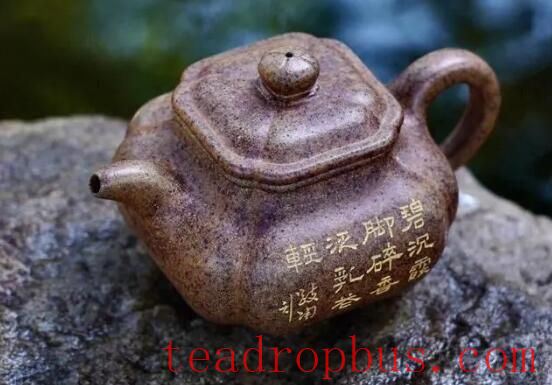Purple clay is a natural and special mineral soil, rich in iron, clay, and sandy shale. It is a unique mineral resource of China, hidden deep in the mountains. Purple clay belongs to a special type of pottery, refined from sand hammering, which neither robs the Tea of its aroma nor imparts any cooked soup flavor, allowing the tea's color, fragrance, and taste to be fully retained.

Purple clay is a natural and special mineral soil, rich in iron, clay, and sandy shale. It is a unique mineral resource of China, hidden deep in the mountains. Purple clay belongs to a special type of pottery, refined from sand hammering, which neither robs the tea of its aroma nor imparts any cooked soup flavor, allowing the tea's color, fragrance, and taste to be fully retained.
Purple clay Teapots are easy to absorb tea juice, and their inner walls do not retain any odor without the need for brushing. Over time, tea stains accumulate inside the pot, and even when hot water is poured in, it carries the aroma of tea. Therefore, tea stains can be left in the pot, as they contain the nutritional components of tea leaves and the precipitation of minerals. After biological testing, the purple clay Teapot contains aureomycin components, which have anti-inflammatory and detoxifying effects, and can also help maintain the teapot.
The longer the time, the better the pot becomes. The pot itself not only changes to a warm color but may even emit the natural fragrance of tea leaves. Therefore, purple clay pottery is used as the preferred utensil for cooking and brewing tea. It has a history of more than 1,000 years in China, representing the perfect combination of practicality and artistry, and has always been loved by literati and scholars.